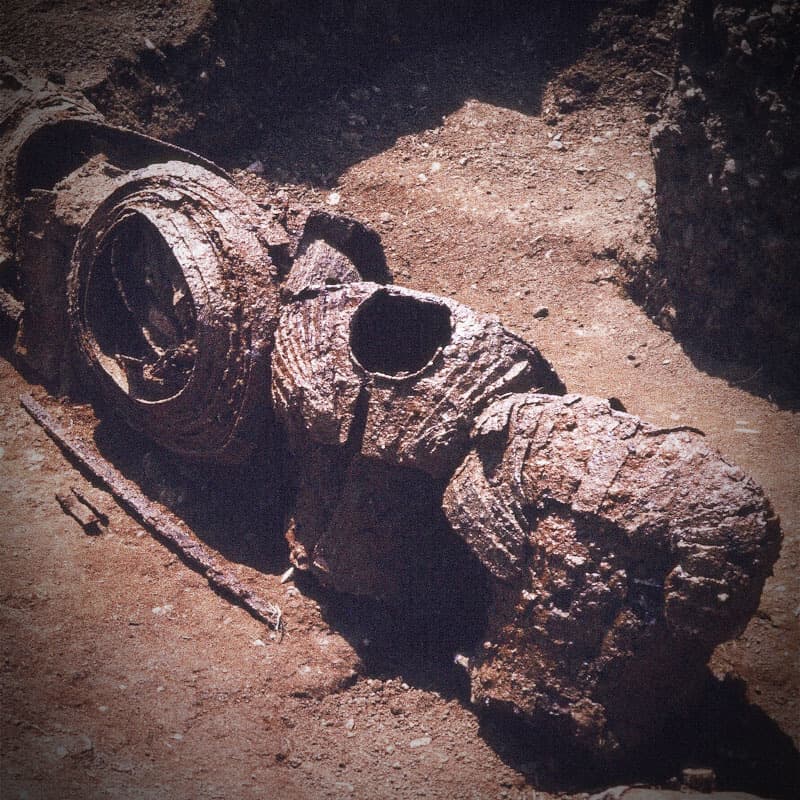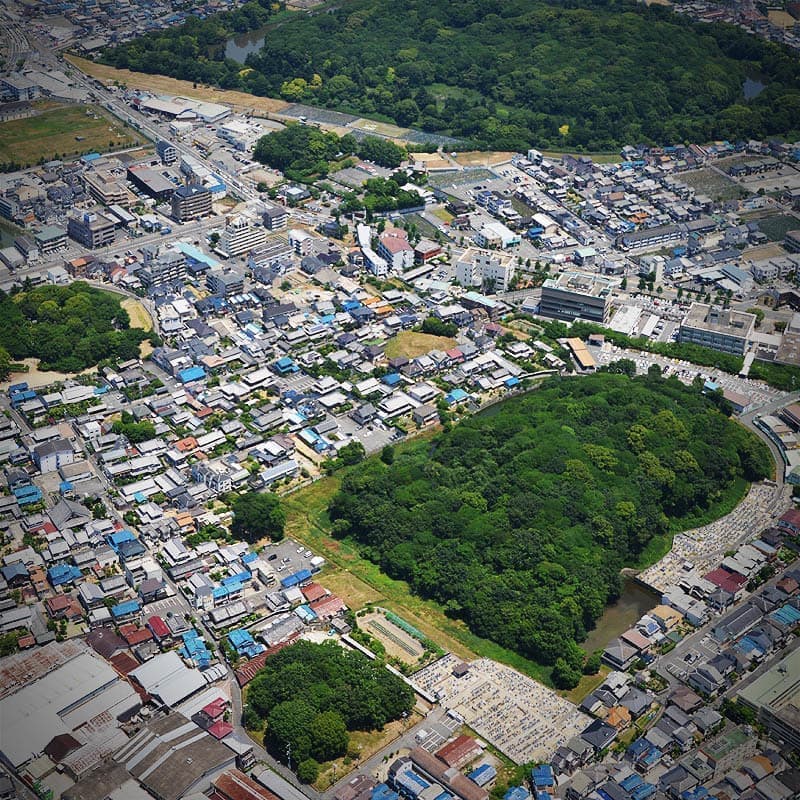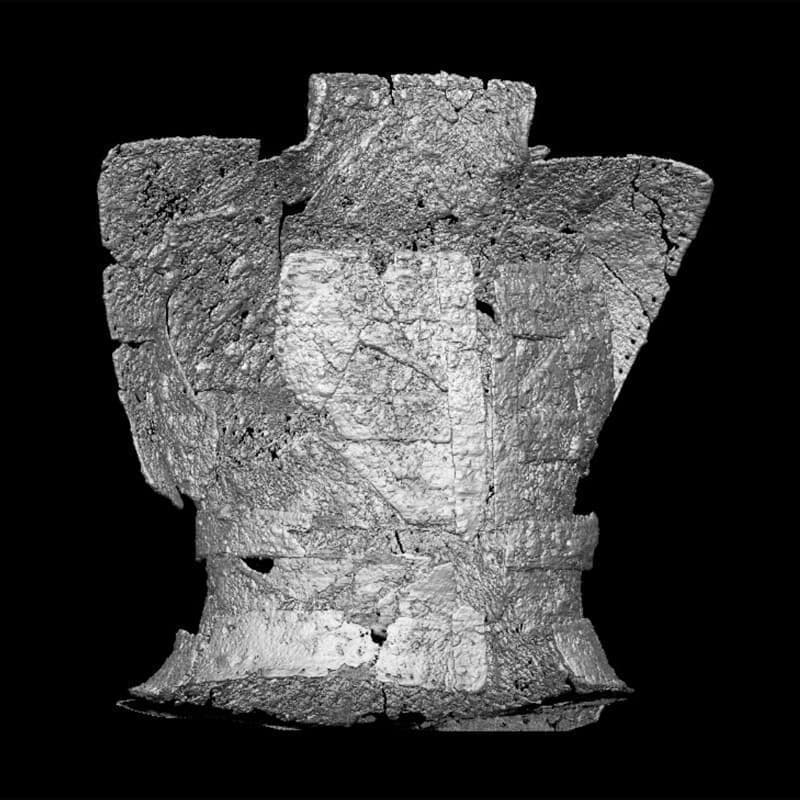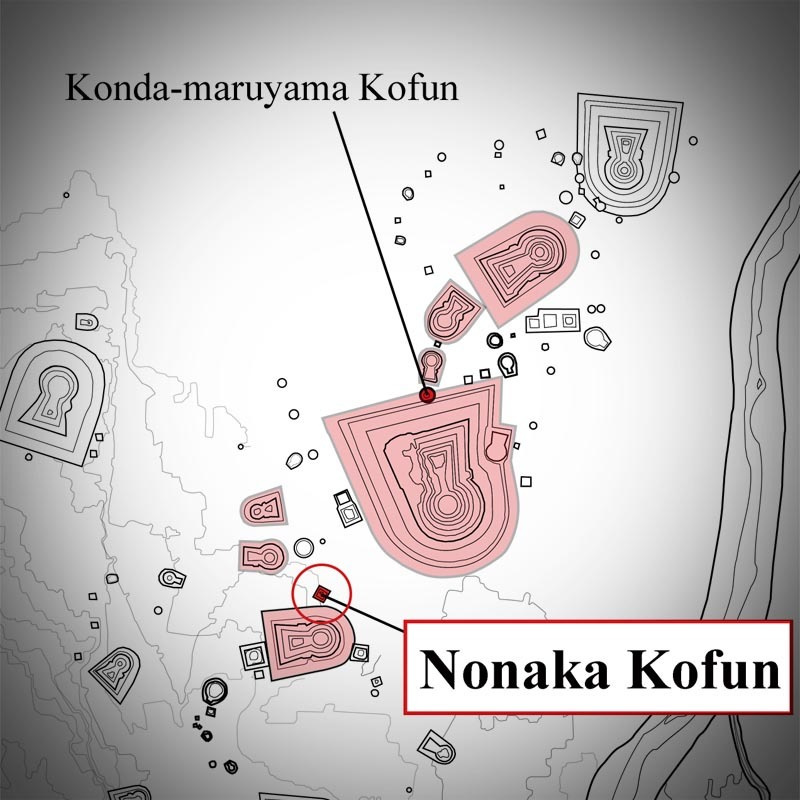Introduction
The Mozu-Furuichi Kofun Group and the Nonaka Kofun
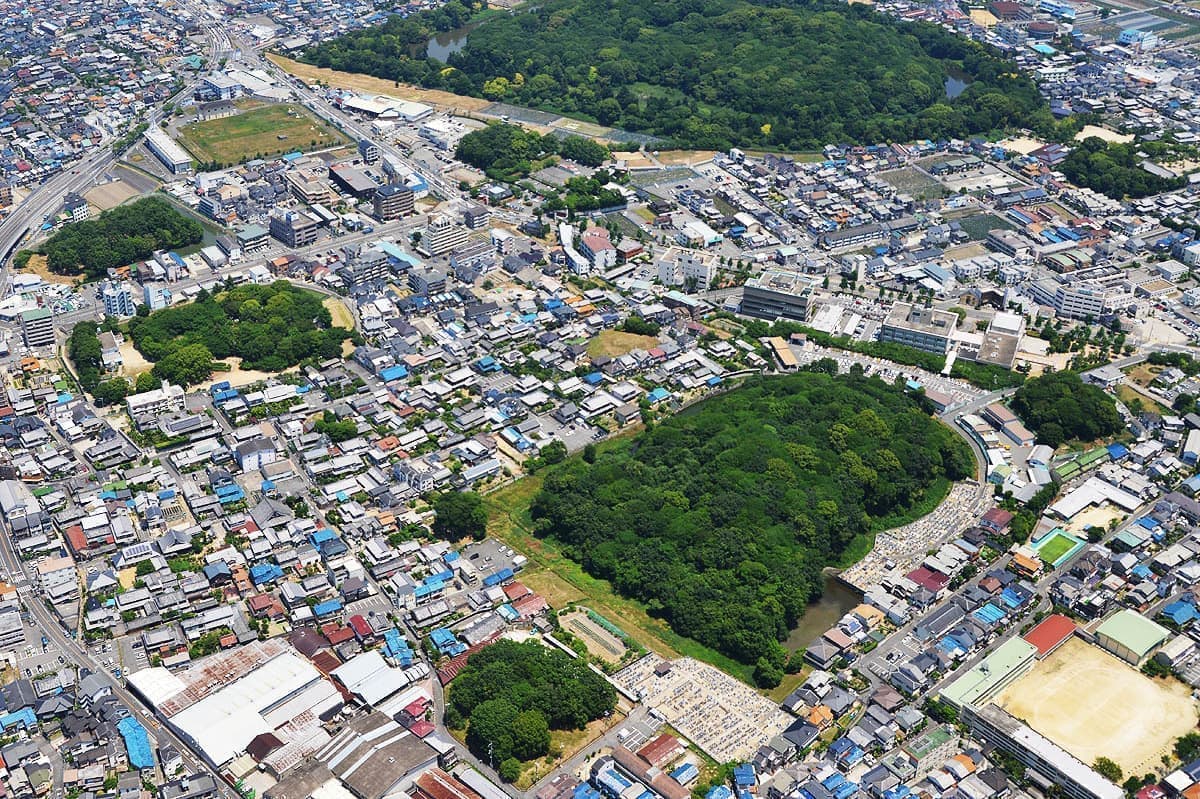
The Mozu-Furuichi Kofun Group, located across Sakai, Habikino, and Fujiidera Cities in Osaka Prefecture, is a group of ruins containing many kofun, known in particular for the three largest kofun in Japan in terms of scale.
This kofun group was registered as a UNESCO World Heritage Site on July 6, 2019, and has attracted global attention to the site. While the value recognized as World Heritage-class in The Mozu-Furuichi Kofun Group covers many points, among the most important is its “diversity.”
This group contains not only some of the world’s largest burial mounds, such as Daisenryo kofun (Nintoku-tenno-ryo Kofun) and Konda-Gobyoyama kofun (Ojin-tenno-ryo Kofun) but also small kofun of just a few dozen meters in diameter. These tombs are diverse not only in size but in shape, including keyhole, round, and rectangular shapes, composing a diverse selection of kofun.
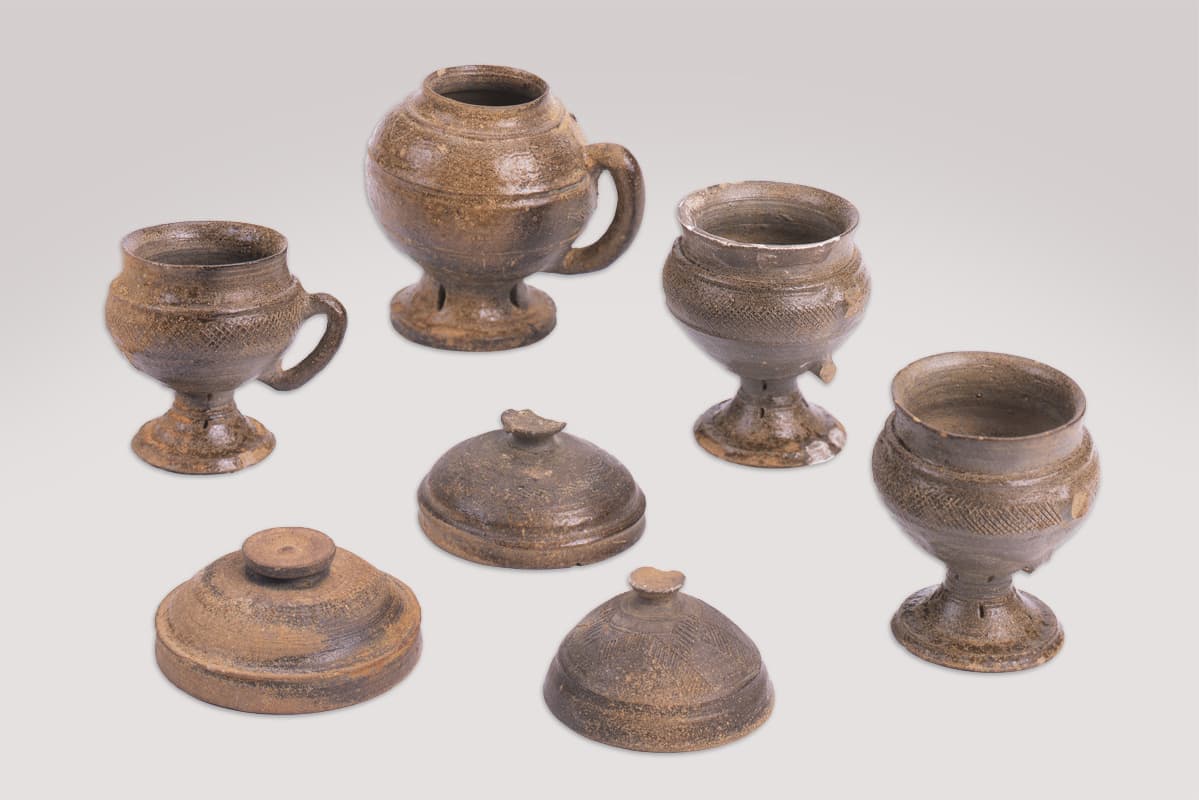
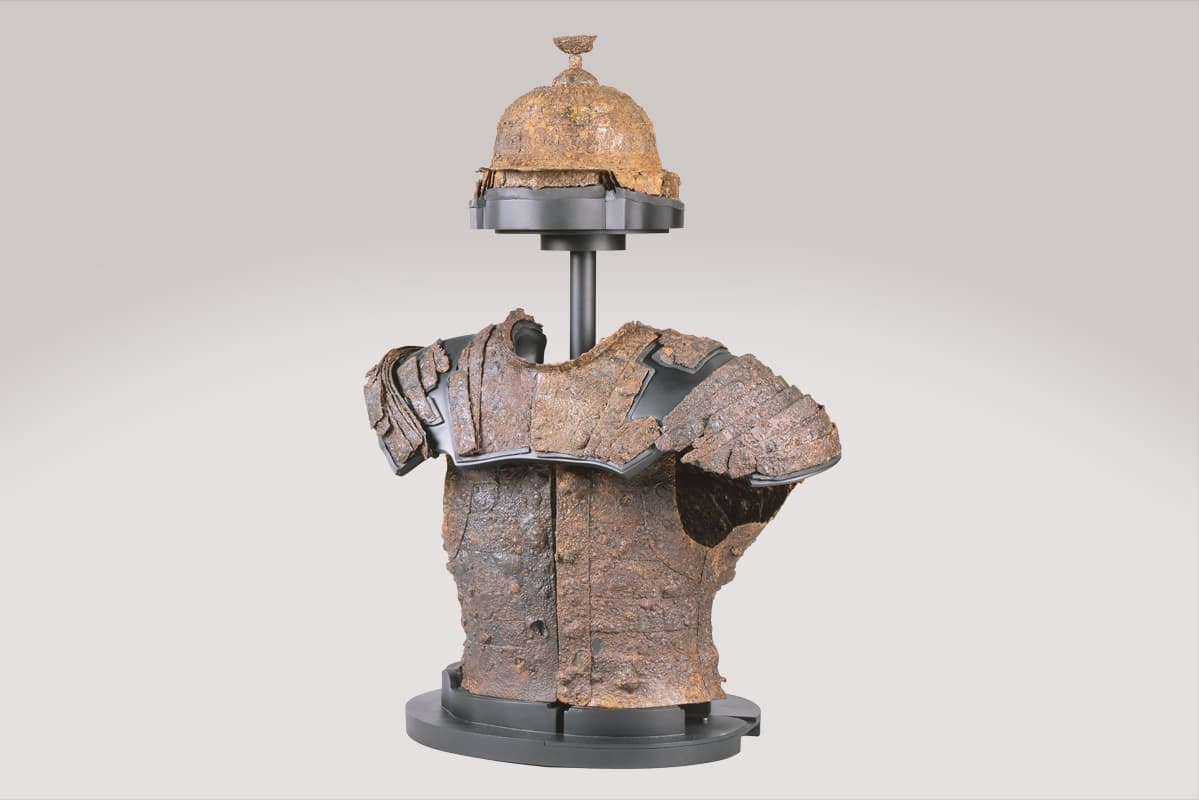
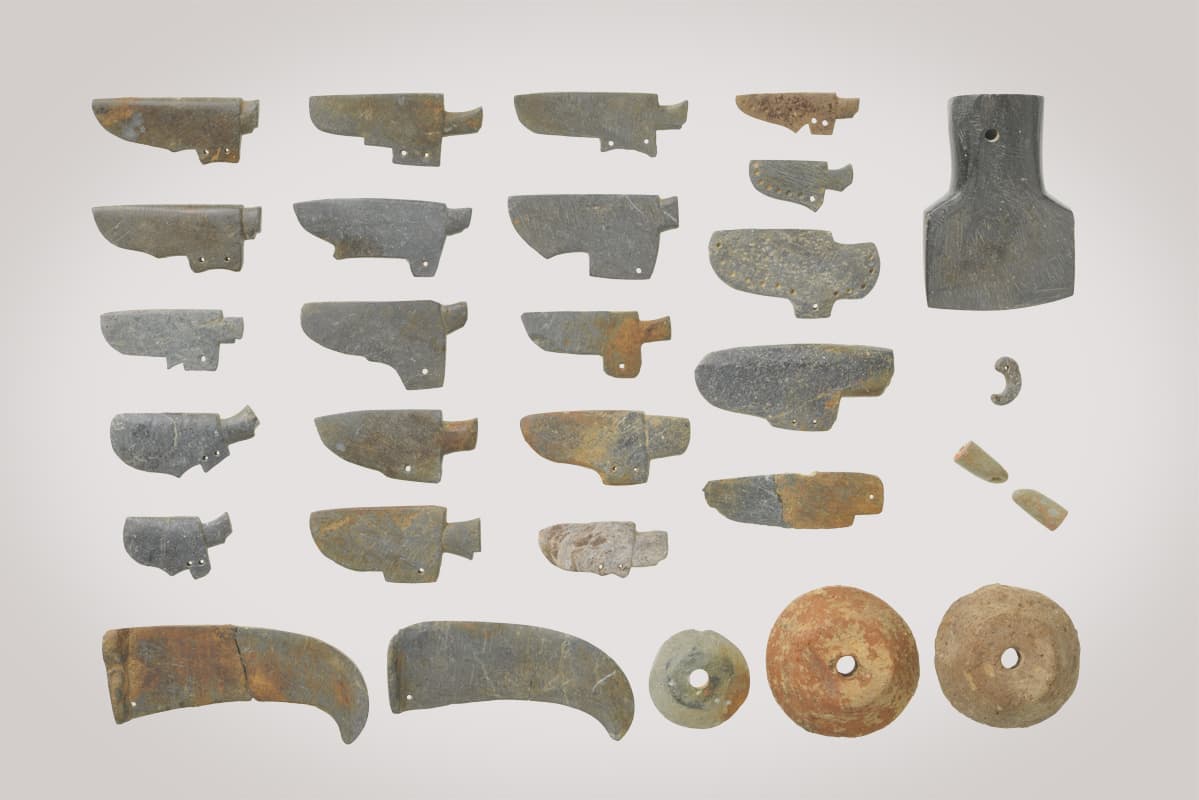
Situation calling for preservation and repair
The Nonaka Kofun (Fujiidera City), excavated in 1964 by Osaka University, is likewise a component of the World Heritage group. At about 40 m on a side, the Nonaka kofun is one of the smaller ones in the Mozu-Furuichi group; however, it contains many weapons and arms, including 11 suits of armor (armor and helmets), sufficient to suggest the force and political strategy of the Yamato government of the time, which built the kofun group.
However, many years have passed since the original excavation, and the artifacts require preservation and repair. But such repairs necessitate significant costs and preparatory work. The Osaka University Department of Archaeology has received research funds, aid from various organizations, and financial support from the Agency for Cultural Affairs as a “Project Promoting Tourism and Revitalizing the Region through Cultural Heritage” from 2013 on, thus carrying out scientific preservation and repair.
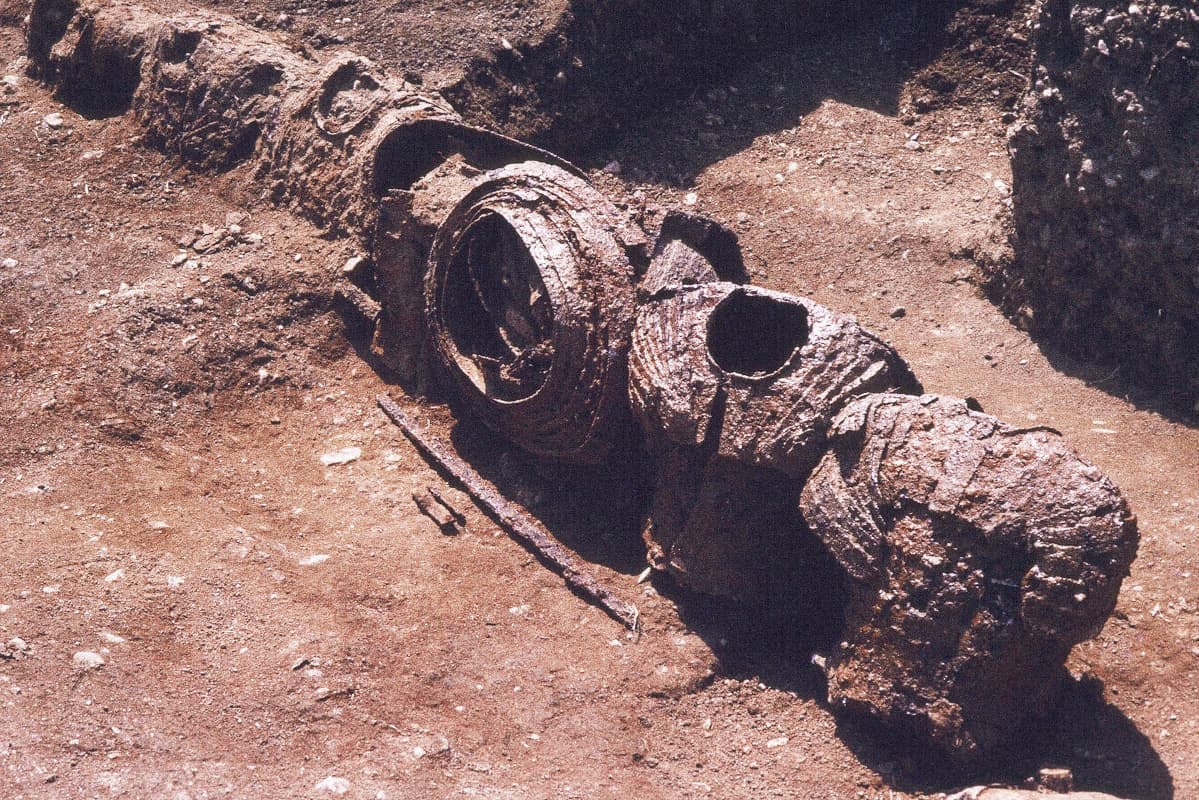
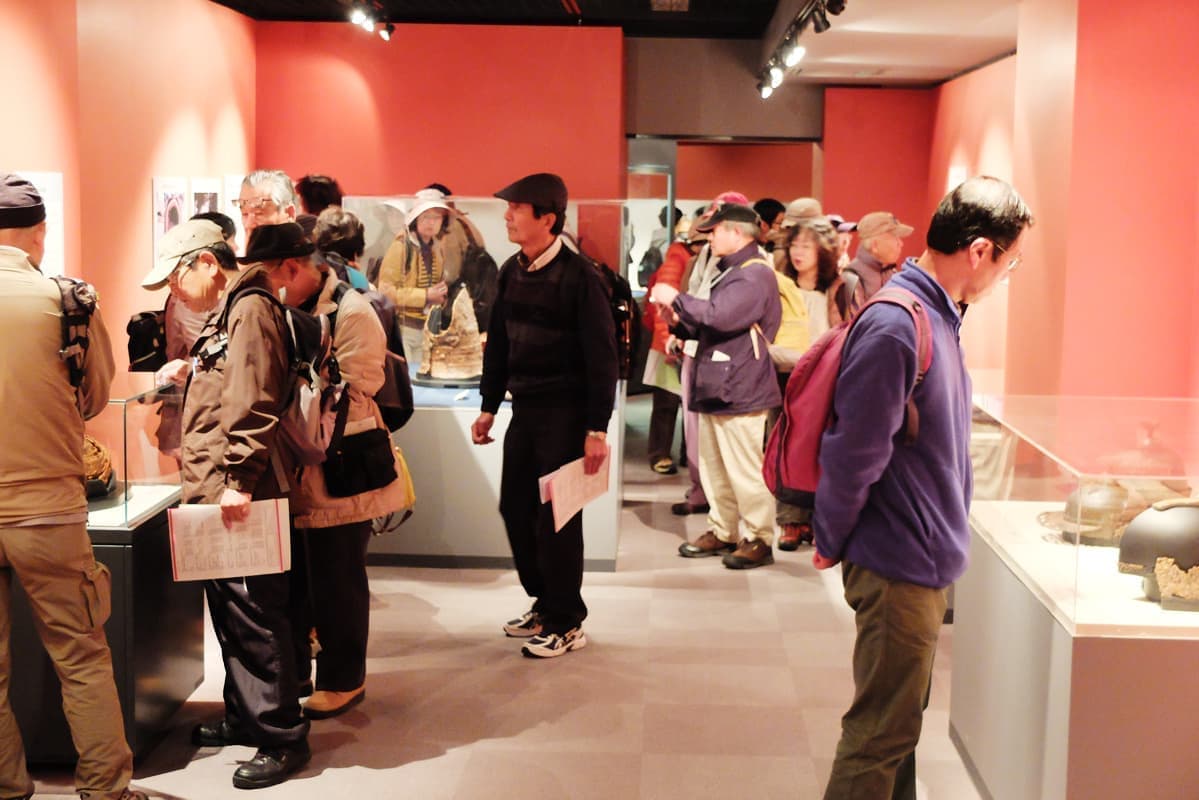
Exhibit at the Museum of Osaka University
The outcomes of this preservation and repair work were on display in an exhibit of restored materials at the Museum of Osaka University in February and March 2014, entitled “ Nonaka Kofun and the Age of the Five Kings of Wa” Although the exhibit space was small, it received some 3,700 visitors, and the catalog created for the exhibit (part of the museum’s series) became an opportunity for the recognition of the importance of the Nonaka kofun among the general populace as well as in academia.
Some of the visitors, upon seeing artifacts exhibited for the first time, commented that they hoped the exhibition would remain open. However, as of now the museum’s limited space has made it impossible to hold a permanent exhibition.
Thereafter, the Nonaka kofun artifacts underwent further organization before being designated as a national Important Cultural Property in 2015. Materials that had been unable to be designated in proportion to their importance due to the stalled preservation and repair work were finally recognized according to their value.
Registration as a UNESCO World Heritage Site
In 2019, as noted above, The Mozu-Furuichi Kofun Group was registered as a UNESCO World Heritage Site. The Daisenryo kofun, a keyhole-shaped tomb with a round rear mound, may be the most striking at a total length of over 500 meters, but the Nonaka kofun, a rectangle just 40 meters square, is also a repository of history among the plentiful artifacts found there. As a kofun group composed of unique shapes and diverse sizes, this group is highly unusual at a global level and thus considered of value.
While the Mozu-Furuichi Kofun Group has drawn attention as a World Heritage Site, reactions among the general populace tend to be along the lines of “I know there are tombs around there, but not what they’re like inside” or “What’s buried in there, anyway?”
This project uses the recently adopted 3D measurement method to recreate as images the Nonaka kofun artifacts which cannot be directly exhibited (or which can rarely be seen directly even if exhibited), and puts these images online to make them available worldwide. The project has aimed to realize these goals through crowdfunding.
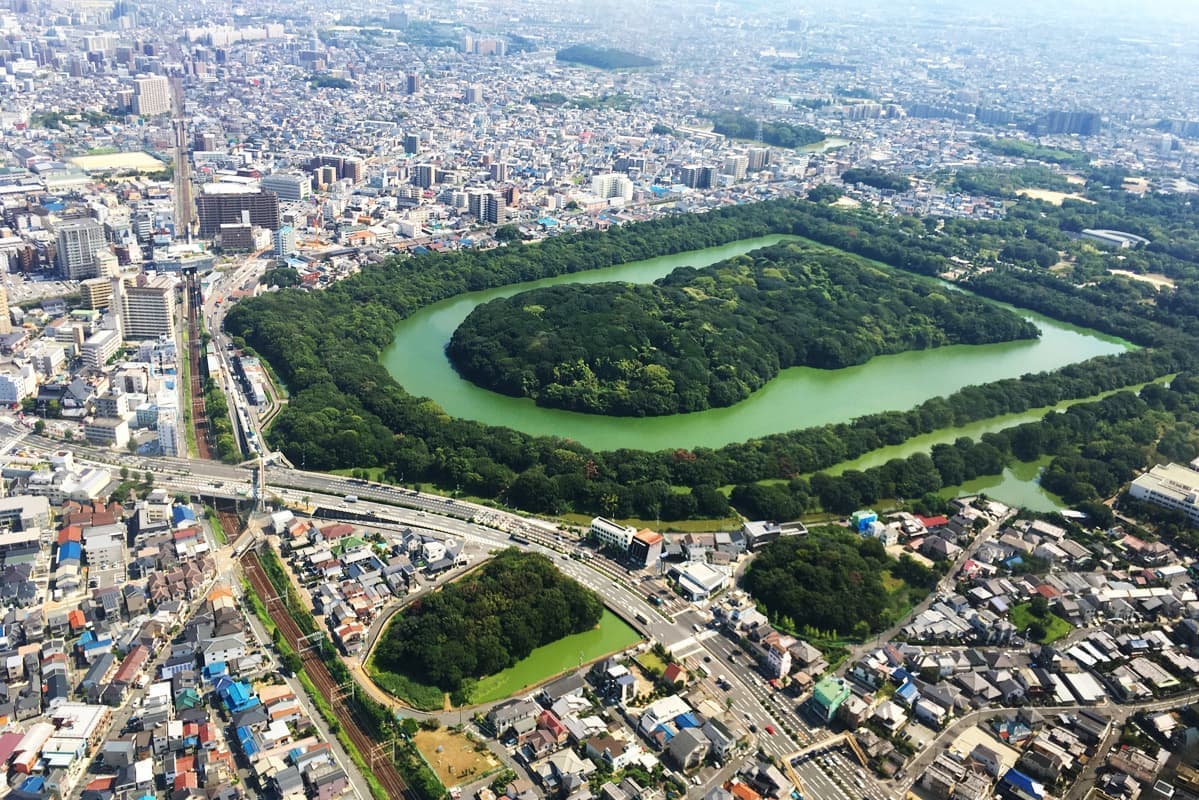
Project content
STEP1
3D measurement of the Nonaka Kofun artifacts
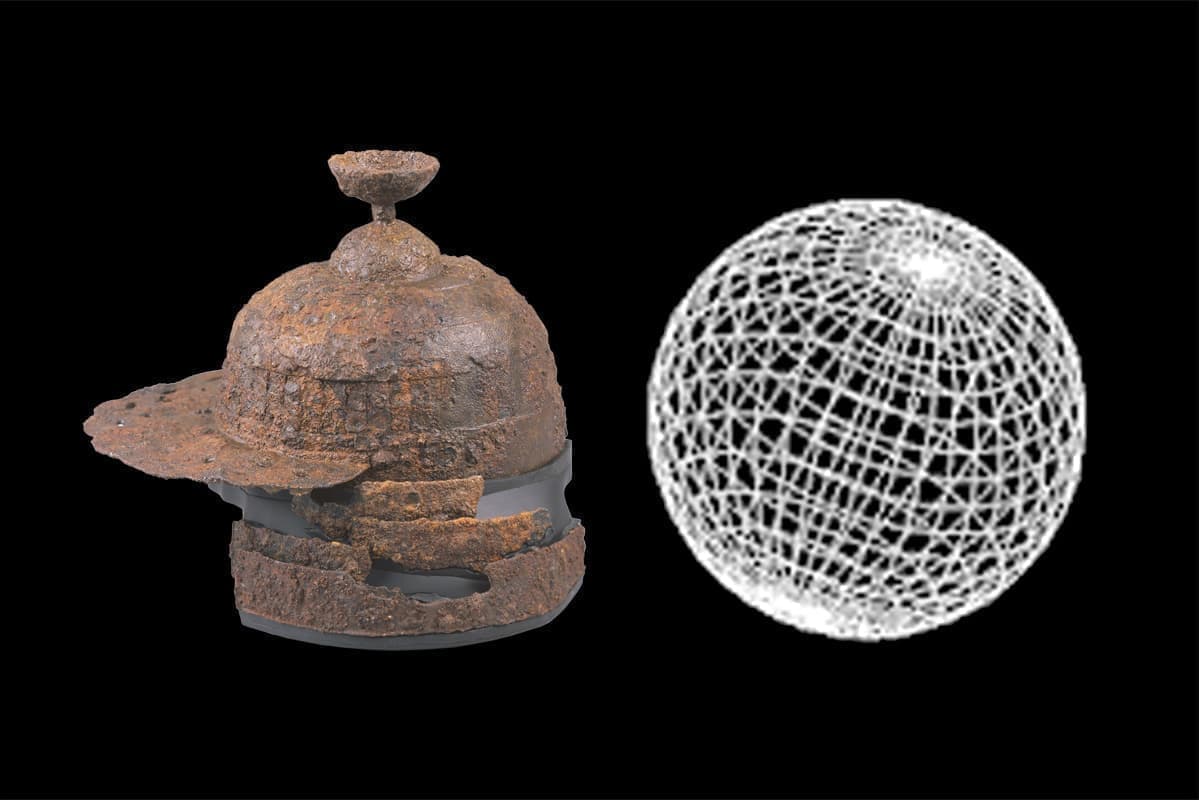
State-of-the-art devices were used for 3D measurement of the Nonaka kofun artifacts. The measurement and data processing were carried out through discussion with 3D measurement device specialists regarding methods, incorporating the aim of polishing measurement methods with regard to issues and points to be improved as well.
The 3D measurement took place at the Nara National Museum, where the artifacts were transported upon packaging. The Nara National Museum staff were extremely helpful throughout this process, in particular Torigoe Toshiyuki, who conducted the measurement work, as well as Nakagawa Aya and Yoshizawa Satoru. Other institutions around Japan also cooperated in the preparatory work, in particular the Kyushu National Museum.
STEP2
Processing and 3D model creation
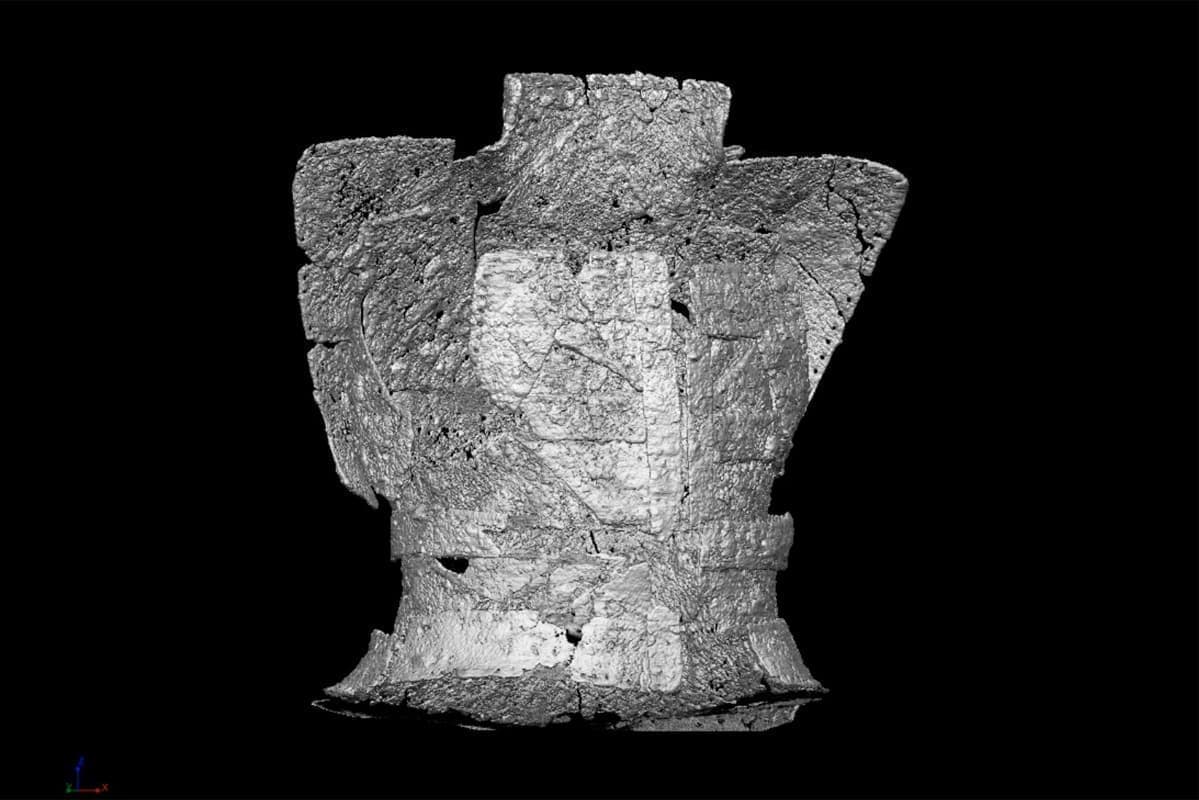
3D measurement data is extremely useful for understanding the three-dimensional shape of archaeological materials. Based on this data, a 3D model identical to the actual artifact can be completed and then rotated to enable observation of the material from every angle. In particular, for fragile materials like iron products which are difficult to observe freely when held by hand, 3D measurement data of this kind is highly significant for research as well.
This project owes a great deal to Hashimoto Tatsuya of the Kagoshima University Museum, who has worked to promote armor research while creating 3D models.
STEP3
International contact online
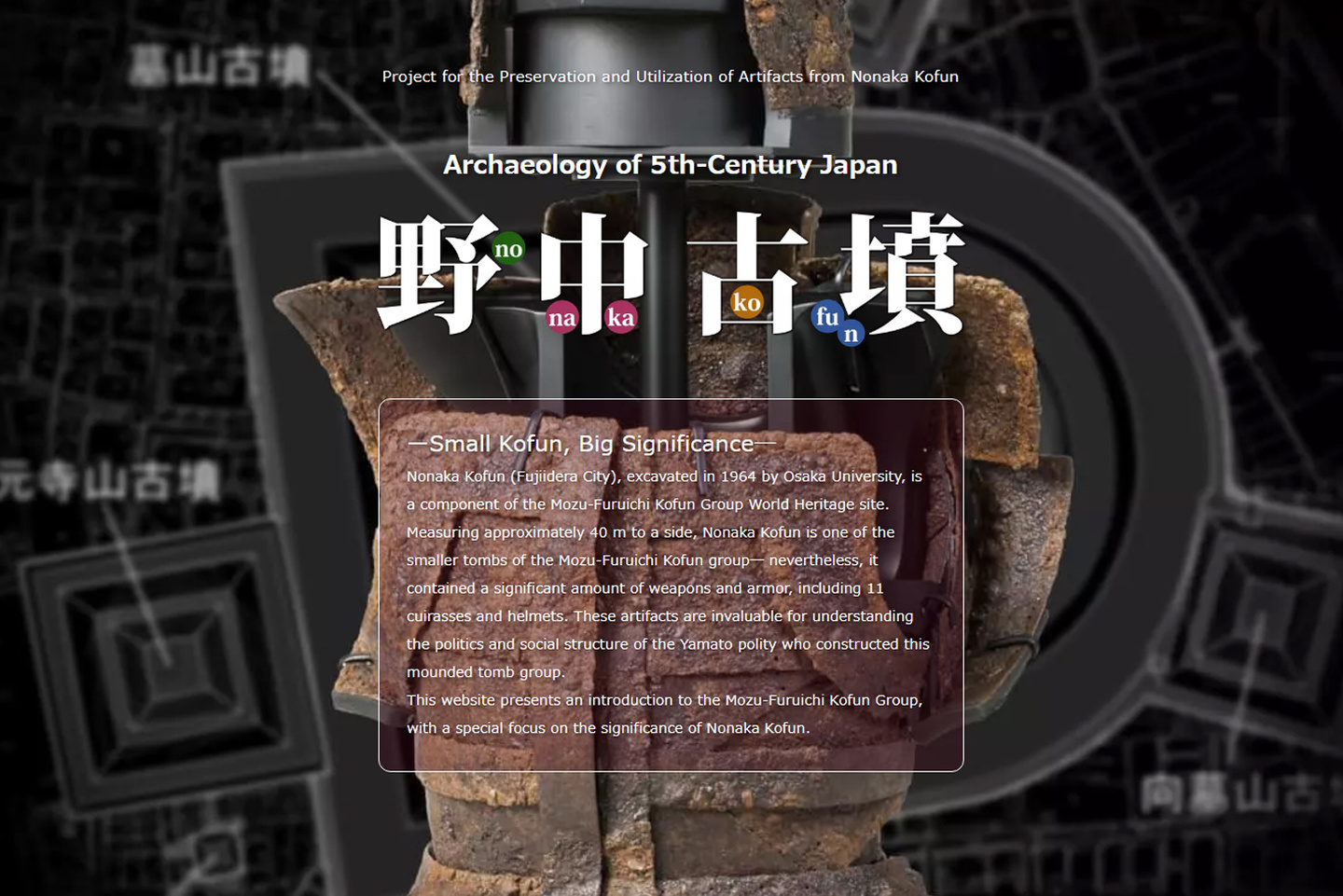
The project exhibited its outcomes via the Internet. The results of the 3D measurements conducted thus far can be disseminated by using the Internet, making full use of the strengths of the 3D models. That said, because some communication environments might not be up to the task, flat images were also provided to make various viewing methods possible. We would like to make further improvements in the future.
In addition, the website introduces the characteristics and value of The Mozu-Furuichi Kofun Group as a historical site. The website also includes English as well as Japanese versions, in the hope that people overseas with an interest in Japanese history and cultural heritage will have a chance to learn a little more about the value of the site. We would like to thank Mr. Joseph Ryan of Okayama University for his cooperation in creating the English version of the website.
The project described here, while it has been carried out with the inestimable cooperation of many people, remains incomplete in some ways. For example, the plentiful 3D data, currently viewable only through automatic replay, should eventually be made greater use of. It is hoped that this project, to be further continued through the Osaka University Department of Archaeology, will continue to receive the support it has been graced with so far.
CONTENTS
Project overview
The Nonaka Kofun-period mounded tomb (referred to below as Kofun) contains many weapons and arms such as suits of armor, suggesting the force and political strategy of the Yamato government of the time.
Mozu-Furuichi Kofun Group
The Mozu-Furuichi Kofun Group in Osaka Prefecture was registered as a UNESCO World Heritage Site on July 6, 2019, and is one of Japan’s largest kofun groups.
Nonaka Kofun 3D imaging
You can see the abundant weapons and armor excavated from Nonaka Kofun in 3D images.
